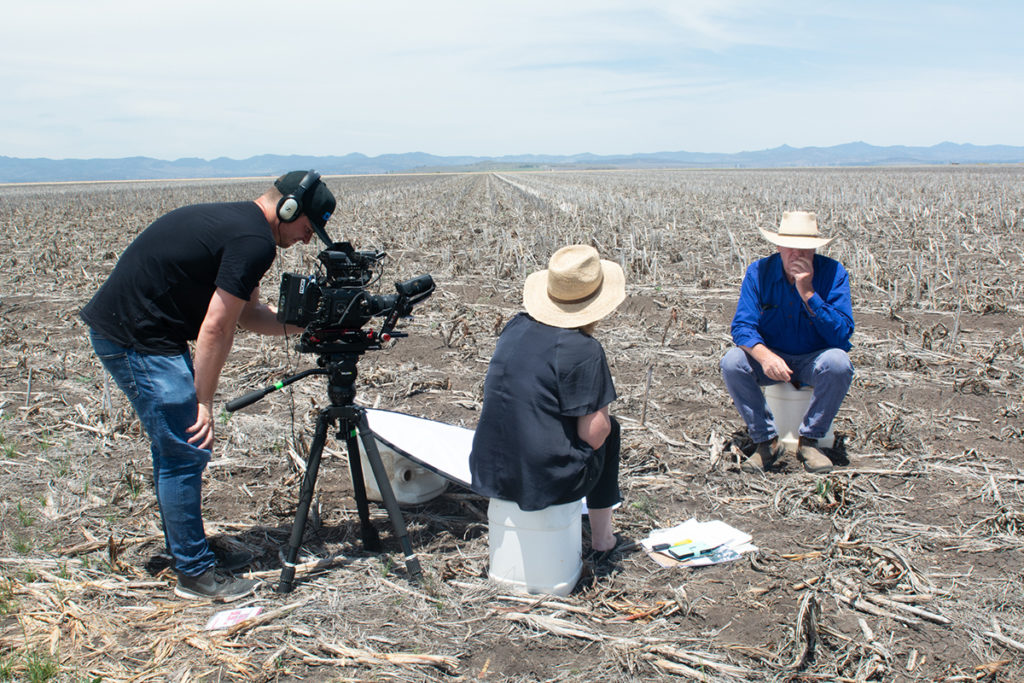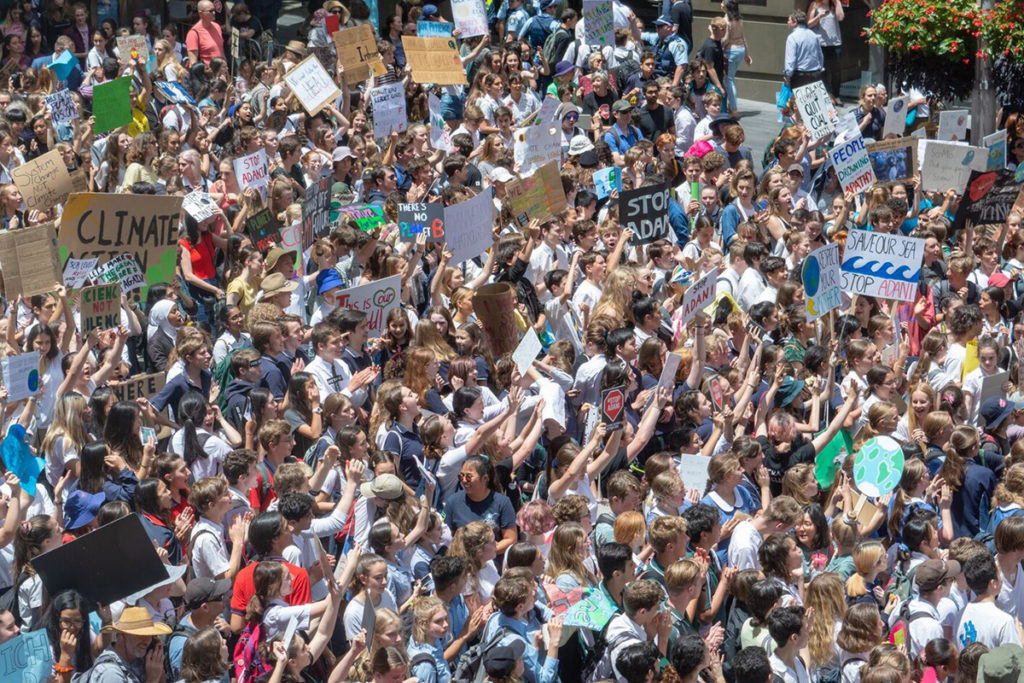To say that 2018 has been a huge year in climate change would be an understatement. From climate change-fuelled extreme weather – record-breaking heat, dangerous bushfires, severe drought – to political action (and inaction), both internationally and home on Australian soil; to climate leaders popping up in surprising places – there’s been no shortage of memorable events in the climate change space.
Here are the Climate Council’s eight biggest moments in climate change for 2018, in order of appearance:
1. It was a hot, hot summer.
Fresh off the back of a sweltering 2017 (the third hottest year on record), 2018 brought with it some scorching summer days. Records were smashed – with Penrith taking top spot as the hottest place on earth just seven days into the new year – and summer going down as the second-hottest on record.

But it wasn’t just summer that brought scorching weather. Persistent summer-like heat set numerous records throughout April, with 9 April going down as Australia’s hottest April day on record (April 8th had already broken the previous record!). Adelaide experienced its hottest three days in a row and several other locations set temperature records as well. Overall, the month was the second hottest April on record across Australia, and the driest in 21 years.
2. Our beloved Great Barrier Reef scored some much-needed federal funding – but not where it counts.
With climate change driving a massive increase in marine heatwaves, and following the back-to-back bleaching events of 2016 and 2017, it was crystal clear that swift action needed to be taken to protect one of Australia’s most treasured natural icons. Unfortunately, a series of federal funding announcements, including an almost $500 million grant, did little to address the main driver of these unprecedented bleaching events: climate change.

3. The Federal Government’s signature energy policy failed to get off the ground – but local, state and territory governments stepped up to save the day.
The woefully inadequate National Energy Guarantee (NEG), failed to secure the state and territory government support it needed – and it was totally scrapped upon the ousting of PM Malcolm Turnbull. The Australian public was left in the lurch with no credible climate and energy policy.
Thankfully, state and territory governments, led by Tasmania, ACT and SA, picked up the pace in this year’s renewable energy race.

And local governments across the country demonstrated their strong commitment to climate action, with the Climate Council’s Cities Power Partnership crossing the 100 member councils mark. The Partnership is now the largest local government program for climate action in the country.
4. The Intergovernmental Panel on Climate Change (IPCC) released a landmark report, highlighting the need to accelerate global climate change action.
The IPCC, the most authoritative international body on climate science, released its special report on climate change, examining the difference between a 1.5˚C and a 2˚C warmed world (read the Climate Council’s localised rundown here).
The report underlined that cutting greenhouse gas pollution to the level required to keep warming below 1.5˚C, would require far-reaching transitions in energy, land, infrastructure and industry. It’s a formidable challenge, but the solutions are available and are both technologically and economically feasible.
Considering global temperatures have already warmed 1˚C since mass industrialisation, 1.5˚C looms large. And the IPCC’s assessment has made clear just what’s at stake if we surpass it, with worsening extreme weather events like heatwaves, droughts, bushfires and flooding already being felt.

In the wake of the landmark IPCC scientific report, people are sitting up and taking notice, but we need more action from international leaders. And unfortunately, the Australian Federal Government has so far failed to deliver a credible climate policy in response, while our emissions have continued to rise for the past four years. Despite misleading statements from the Federal Government, Australia is not on track to meet its greenhouse gas pollution reduction target of 26-28% by 2030 (below 2005 levels).
5. There was little relief for farmers and rural communities, who endured devastating drought conditions across much of eastern Australia, which were exacerbated by climate change.
Low rainfall from late autumn through early spring worsened drought conditions across eastern Australia. This led to 100% of NSW being declared in drought in August, and following, the driest September on record for the nation as a whole.
2018 has also been very warm, compounding the effects of low rainfall. To date, maximum temperatures for 2018 have been the second-hottest on record, while New South Wales has experienced its hottest January-November on record.

6. Unprecedented conditions added fuel to bushfires.
In 2018, disastrous bushfires roared through much of the country. In March, devastating bushfires ripped through Tathra on the southeast coast of New South Wales, damaging or utterly destroying dozens of properties. In April, bushfires broke out in southwest Sydney, and in several NSW local government areas the bushfire danger period was declared in winter – the earliest on record.
Around 1,000 fires burned in Queensland in August alone, and in November, record-breaking heat fuelled severe fires in the east of the state, decimating tropical rainforests and burning as far north as Cairns. And in the US, the most deadly and destructive wildfires in California’s history ravaged the northern parts of the state. All these events have been influenced by climate change from the burning of coal, oil and gas.

7. Future generations made their voices heard.
In November, thousands of schoolkids across Australia went on strike to protest federal inaction on climate change and stand up for their futures. And at the UN climate talks in Poland (COP24), 15-year-old Swedish climate activist and fellow school striker, Greta Thunberg, instructed world leaders to get their acts together by “focusing on what needs to be done, instead of what is politically possible”.
Young voices offered fresh perspectives – and a glimmer of hope – amidst Australian Federal Government inaction and, more broadly, challenging international climate negotiations.

8. In early December, the former heart of Poland’s coal industry played host to the most important international climate talks since Paris.
Hosted in Katowice, Poland, the 24th Conference of the Parties (COP24) brought nations together to negotiate international commitments on climate action, including standardising timelines for emissions data reporting and checking countries are on track to meet their agreed commitments.
The international event was widely heralded as the biggest climate talks since the Paris Climate Agreement of 2015. But a small handful of stubborn fossil fuel powerhouses seemed keen to delay action. And embarrassingly, Australia was awarded the wooden spoon for “Fossil of the Day”, as a result of our poor track record on greenhouse gas emissions, which continue to go up.

While the talks resulted in an agreed “rulebook” for cutting emissions and ensuring compliance, some decisions, such as the mechanisms of an emissions trading scheme and the issue of ratcheting up climate ambition, have been delayed.
But although 2018 has had its challenges, momentum on climate action is building as we head into the new year.

2019 is a Federal election year in Australia – and it’s shaping up to be a crucial moment for climate change. Based on exit polling, almost 80% of voters in this year’s Wentworth by-election were influenced somewhat by climate change in casting their vote, proving that climate change can, and will be an election-deciding issue.

And Australian households are taking renewable energy into their own hands, with over two million Aussie houses now bedecked with solar panels. Australian businesses are getting on board, too, cutting costs and pollution in the process. And the price of renewables continues to slide, with new wind and solar now cheaper than existing coal power generation.
As we head into 2019, it’s an opportune time to pause, take a breath, and ask: what do we want the coming year to look like? How we choose to answer that question could determine our course for years, decades, even centuries to come.
At this critical point in history, the need to act on climate change is more pressing than ever, and the window to do so is rapidly closing. Can you pitch in today to push for climate action in the year ahead?
As Australia’s leading community-backed climate communications organisation, the Climate Council will use your contribution to keep climate change in the news, produce world-leading science reports and arm key decision-makers with information on the science. Donate today.
Images, top to bottom: Giphy / Climate Council / Giphy / Flickr user John Westrock / Climate Council / BoM Satview / Climate Council / Climate Council / Jason Blackeye via Unsplash / Giphy